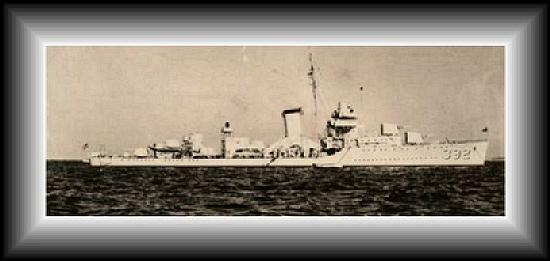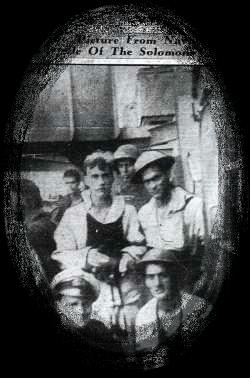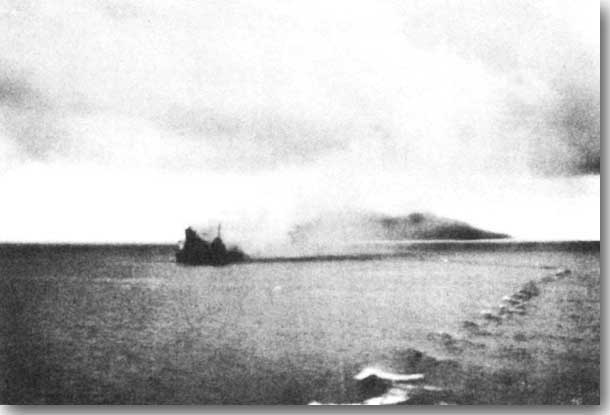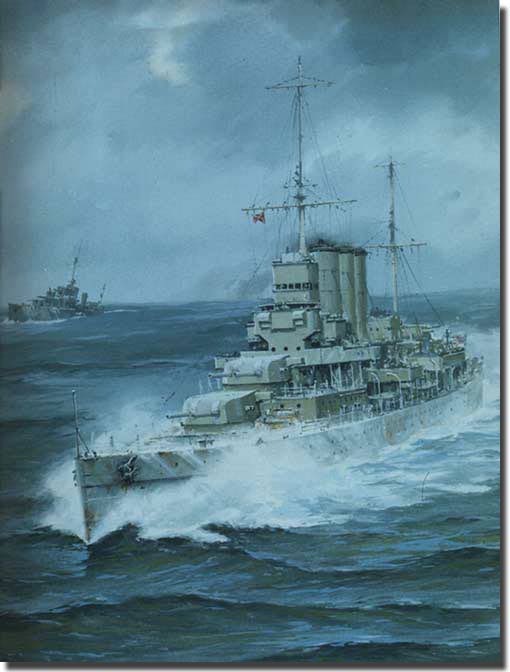|
H.M.A.S. Canberra and the Battle of Savo Island
Sinking of Canberra MY EMBROIDERED CAP BADGE AND BRUCE LOXTON On my way down, I came across two sailors with a body on a stretcher. They were lifting up this person to drain away the trapped blood. On investigation I made out Bruce Loxton, who as the Captain's Midshipman on the bridge, had been severely wounded. Bruce had ghastly wounds and I did not believe he would survive. He was conscious and I said "How are you Bruce?" His response was "I will be alright" and his fighting spirit pulled him through. He survived and continued as an Executive Officer in the RAN, to retire as a Commodore.
PATTERSON TO THE RESCUE
At about 0330, PATTERSON came alongside our port side forward of the 4" Gun Dock. She provided pumps and hoses for fire fighting and proceeded to take on board wounded from the fore half of CANBERRA. Captain Getting was amongst those removed to PATTERSON. We were informed by PATTERSON that Rear Admiral Turner had indicated if CANBERRA could not steam by 0630, she would have to be abandoned and then sunk. At 0430, PATTERSON ordered all lights to be extinguished - she had sighted a hostile ship on her Port Quarter so she quickly slipped or cut all lines. I vividly recall her captain's reassuring words "don't worry, we'll be back." As PATTERSON quickly got underway, the enemy ship opened fire. I still had my 1900 binoculars (from the fore control) around my neck. I quickly used them and recognized CHICAGO - she had mistaken CANBERRA for a burning Japanese cruiser. PATTERSON used her search light and exchanged fire with CHICAGO before their true identity was established. Both ships ceased fire. Another error in a night that may well be described as a comedy of errors - but then, we did not have much to laugh about. It commenced to rain to add to our discomfort. At about this time, the ship's list suddenly increased and Lieutenant Commander Mesley ordered "stand by to abandon ship" I discarded my boots but kept my binoculars. CANBERRA steadied and the final order to leave was not given - at that time. I put on my boots again. SURVIVORS REMOVED
Author is in center, holding binoculars
SINKING OF CANBERRA
COULD CANBERRA BE SAVED?
Canberra sinks with Savo Island in the background
Illustration of Canberra at sea prior to Savo. WITHDRAWAL
REASONS FOR THE JAPANESE SUCCESS - AND SUBSEQUENT ENQUIRIES
US OUTCRY Hepburn travelled widely, accompanied by Commander Ramsay USN, visiting Australia, seeing MacArthur, Crutchley and Australian politicians, but did not interview any RAAF aircrew. He produced a very detailed report running to about 85 pages next chapter |



![[Image]](SavoImages/CanberraSurvivors2-350-235.jpg)

